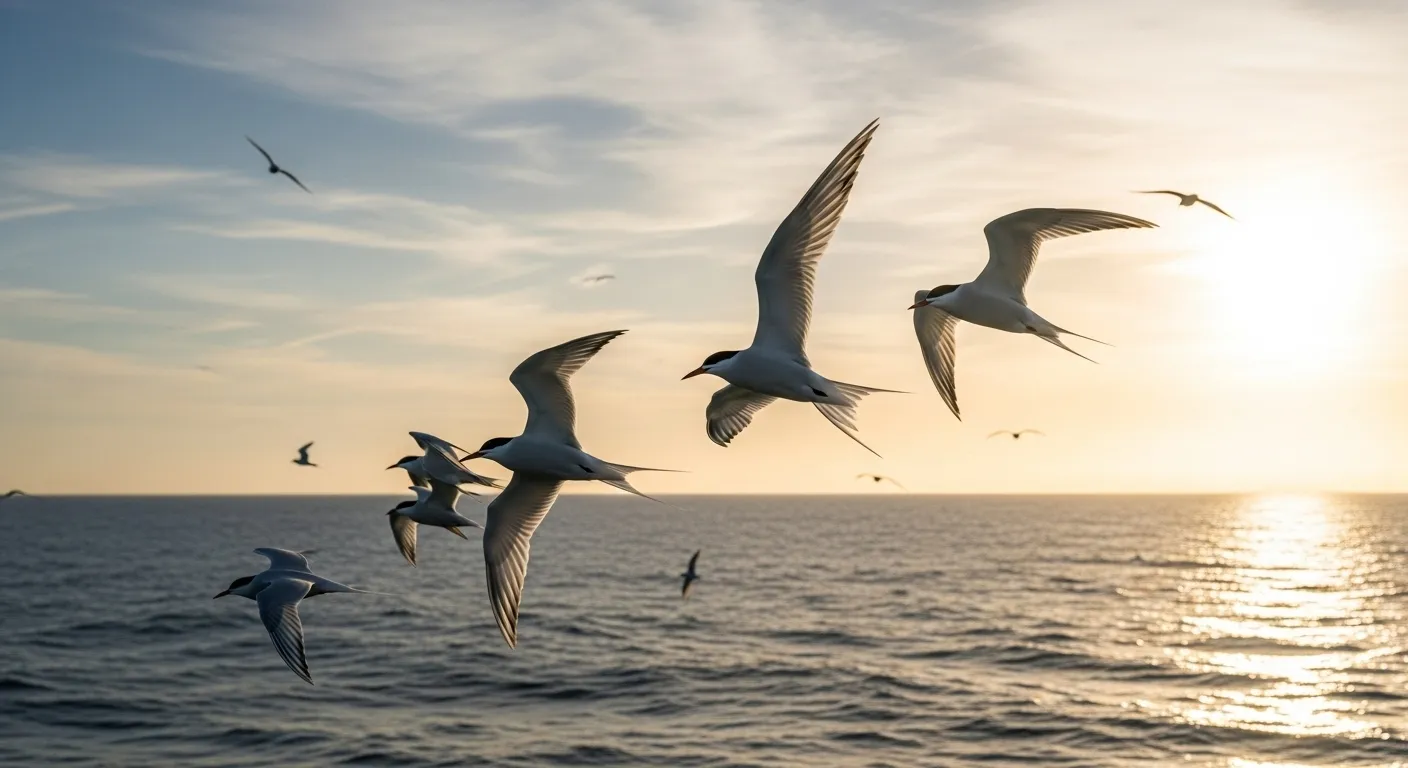
Avian Superhighways: The Global Bird Flyways
Every spring and fall, the skies above us become invisible highways for billions of birds. This avian animal migration is one of the most widespread on the planet. Birds travel along established routes called flyways, which are general corridors that follow coastlines, mountain ranges, and major rivers. These paths offer favorable winds and critical stopover sites where birds can rest and refuel on their long-haul flights.
The undisputed champion of long-distance migration is the Arctic Tern. This small seabird, with a wingspan of about 30 inches (76 cm), travels from its breeding grounds in the Arctic all the way to the Antarctic and back again each year. This pole-to-pole round trip can cover up to 50,000 miles (80,000 kilometers), giving the tern more daylight than any other creature on Earth. They are masters of efficient flight, using wind currents to glide for long stretches of their journey.
In North America, major flyways include the Pacific, Central, Mississippi, and Atlantic Flyways. Along these routes, spectacles of nature unfold. For example, along the Central Flyway in Nebraska, over half a million Sandhill Cranes congregate on the Platte River during their spring migration. Their sheer numbers and resonant calls create an unforgettable wildlife experience. These stopover sites are essential, providing the food resources needed to power the next leg of their journey north to their breeding grounds.
Bird navigation is a fascinating field of biology. They use a sophisticated suite of tools to find their way. Many species use the sun as a compass, compensating for its movement across the sky throughout the day. For night migrations, they use the stars, orienting themselves by constellations. Perhaps most impressively, many birds are believed to possess a ‘magnetic sense,’ allowing them to perceive the Earth’s magnetic field to determine their latitude and direction.
You don’t need to travel far to witness bird migration. Your own backyard or local park can become a front-row seat. During spring and fall, look for new arrivals at your feeders or listen for unfamiliar songs. Many birds you see in the summer are only temporary residents, having traveled thousands of miles from their wintering grounds in Central or South America. Participating in citizen science is a wonderful way to engage with this phenomenon. Websites like eBird, run by the Cornell Lab of Ornithology, allow you to report your sightings and see real-time migration maps, contributing valuable data that helps scientists understand and protect these incredible travelers.















